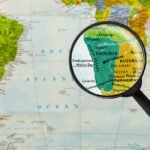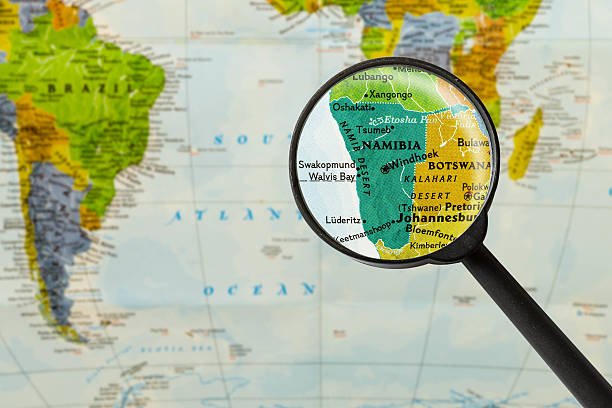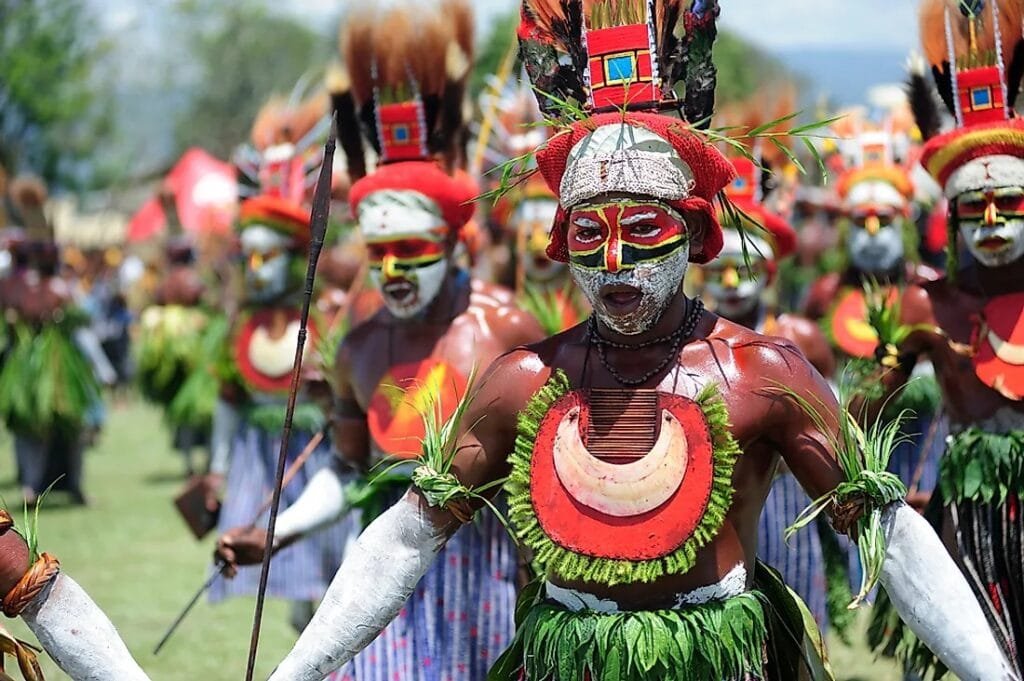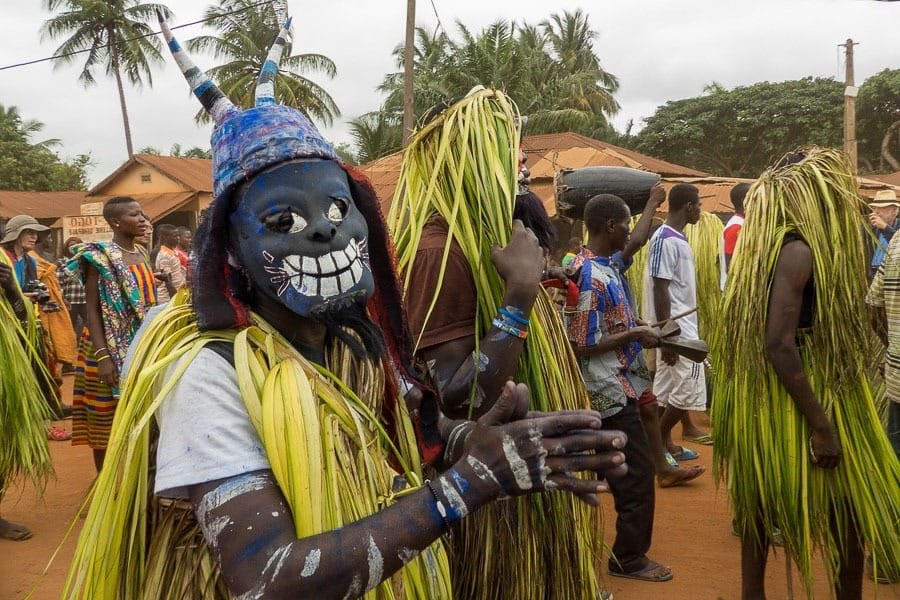Western Sahara, formerly Spanish Sahara, is a disputed territory on the northwest coast of Africa and partially Moroccan-occupied territory in the Maghreb region of North Africa, bordered by Morocco to the north, Algeria to the northeast, Mauritania to the east and south, and the Atlantic Ocean to the west. Its surface area amounts to 266,000 square kilometres (103,000 sq. mi). It is one of the most sparsely populated territories in the world, mainly consisting of desert flatlands. The population is estimated at just about 600,000 of which nearly 40% live in Laayoune, the largest city in Western Sahara.
Occupied by Spain until the late 20th century, Western Sahara has been on the United Nations list of non-self-governing territories since 1963 after a Moroccan demand. It is the most populous territory on that list, and by far the largest in area. In 1965, the UN General Assembly adopted its first resolution on Western Sahara, asking Spain to decolonise the territory. One year later, a new resolution was passed by the General Assembly requesting that a referendum be held by Spain on self-determination.
In 1975, Spain relinquished the administrative control of the territory to a joint administration by Morocco (which had formally claimed the territory since 1957) and Mauritania. A war erupted between those countries and a third force– Sahrawi nationalist movement, the Polisario Front, which proclaimed the Sahrawi Arab Democratic Republic (SADR) with a government in exile in Tindouf, Algeria. Mauritania withdrew its claims in 1979, and Morocco eventually secured de facto control of most of the territory, including all the major cities and natural resources.
This guerrilla war with the Polisario Front contesting Morocco’s sovereignty ended in a 1991 cease-fire and the establishment of a UN peacekeeping operation. As part of this effort, the UN sought to offer a choice to the people of Western Sahara between independence (favoured by the Polisario Front) or integration into Morocco. A proposed referendum never took place due to lack of agreement on voter eligibility. The 2,700 km- (1,700 mi-) long defensive sand berm, built by the Moroccans from 1980 to 1987 and running the length of the territory, continues to separate the opposing forces with Morocco controlling the roughly 80 percent of the territory west of the berm. Local demonstrations criticizing the Moroccan authorities occur regularly, and there are periodic ethnic tensions between the native Sahrawi population and Moroccan immigrants. Morocco maintains a heavy security presence in the territory.
As of 2017, no other member state of the United Nations has ever recognized Moroccan sovereignty over Western Sahara. However, a number of countries have expressed their support for a future recognition of the Moroccan annexation of the territory as an autonomous part of the Kingdom. Overall, the annexation has not garnered as much attention in the international community as many other disputed annexations (e.g. the Russian annexation of Crimea).
Since a United Nations-sponsored ceasefire agreement in 1991, two thirds of the territory (including most of the Atlantic coastline) has been administered by the Moroccan government, with tacit support from France and the United States, and the remainder by the SADR, backed by Algeria. Internationally, countries such as Russia have taken a generally ambiguous and neutral position on each side’s claims, and have pressed both parties to agree on a peaceful resolution. Both Morocco and Polisario have sought to boost their claims by accumulating formal recognition, essentially from African, Asian, and Latin American states in the developing world. The Polisario Front has won formal recognition for SADR from 37 states, and was extended membership in the African Union. Morocco has won recognition or support for its position from several African governments and from most of the Muslim world and Arab League. In both instances, recognitions have, over the past two decades, been extended and withdrawn according to changing international trends.
GOVERNMENT
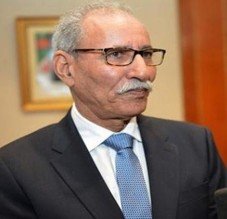
Legal status of territory and issue of sovereignty is unresolved. The territory is contested by Morocco and Polisario Front. Morocco controls territory to the west of the berm (border wall) while the Sahrawi Republic controls territory to the east. The current President, Brahim GHALI, was elected in July 2016 upon the demise of its long-term-exiled leader Mohamed Abdelaziz Ezzedine in Algeria.
There are no administrative divisions officially. The territory west of the Moroccan berm falls under de facto Moroccan control. These portions of the regions claimed by Morocco include Guelmim-Es Smara and Laayoune-Boujdour- Sakia El Hamra as well as Oued Eddahab- Lagouira, another region that falls entirely within Western Sahara.
THE ECONOMY
Western Sahara has a small market-based economy whose main industries are fishing, phosphate mining, and pastoral nomadism. The territory’s arid desert climate makes sedentary agriculture difficult, and Western Sahara imports much of its food. The Moroccan Government administers Western Sahara’s economy and is a key source of employment, infrastructure development, and social spending in the territory.
Western Sahara’s unresolved legal status makes the exploitation of its natural resources a contentious issue between Morocco and the Polisario. Morocco and the EU in December 2013 finalized a four-year agreement allowing European vessels to fish off the coast of Morocco, including disputed waters off the coast of Western Sahara.
Oil has never been found in Western Sahara in commercially significant quantities, but Morocco and the Polisario have quarrelled over who has the right to authorize and benefit from oil exploration in the territory. Western Sahara’s main long-term economic challenge is the development of a more diverse set of industries capable of providing greater employment and income to the territory. However, following King MOHAMMED VI’s November 2015 visit to Western Sahara, the Government of Morocco announced a series of investments aimed at spurring economic activity in the region, while the General Confederation of Moroccan Enterprises announced a $609 million investment initiative in the region in March 2015.
AGRICULTURE
The agricultural sector in the Western Sahara region is of an oasis kind mainly based on animal pastoral production-type associated with activities of irrigated agriculture in the oases. Key agricultural products include fruits and vegetables (grown in the few oases); camels, sheep, goats (kept by nomads.); fish.
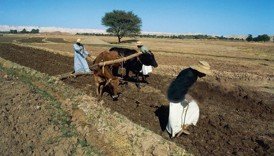 In 1989, after dispossessing the indigenous population, King Hassan II launched a pilot farming project in the surroundings of the city of Dakhla. In 2008 there were already around 600 hectares dedicated to the production of vegetables in greenhouses, mainly tomatoes, cucumber, and melon, to be extended to 2000 hectares by 2020. This production is entirely for exports. It does not feed the local population. The water requirements for this kind of production are very high. Farms are completely irrigated with groundwater, being extracted at an unsustainable rate. The overexploitation of the water resources will lead to depletion of the pits and the salinization of the water basin. In a region with no superficial water resources, this would ruin the access to clean water and consequently make permanent human life impossible. The Sahrawis are not even benefiting from this industry as employees, as the labour force is entirely formed by Moroccan settlers.
In 1989, after dispossessing the indigenous population, King Hassan II launched a pilot farming project in the surroundings of the city of Dakhla. In 2008 there were already around 600 hectares dedicated to the production of vegetables in greenhouses, mainly tomatoes, cucumber, and melon, to be extended to 2000 hectares by 2020. This production is entirely for exports. It does not feed the local population. The water requirements for this kind of production are very high. Farms are completely irrigated with groundwater, being extracted at an unsustainable rate. The overexploitation of the water resources will lead to depletion of the pits and the salinization of the water basin. In a region with no superficial water resources, this would ruin the access to clean water and consequently make permanent human life impossible. The Sahrawis are not even benefiting from this industry as employees, as the labour force is entirely formed by Moroccan settlers.
The livestock sector is dominated by dromedaries totalling 140,000 herd; i.e. 67% of national herd camel. The other animals are also represented in the region with some 380,000 herds of goats, 300,000 herds of sheep and 1,100 herds of cattle. The region also has 30 poultry units.
FISHING
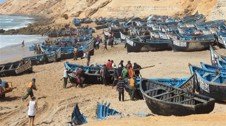
The Western Sahara’s second most profitable natural resource is its coastal fishing water – some of the richest on the continent. European boats have been caught fishing off the Western Sahara, which is illegal according to international law. The European Parliament has defended its economic activities there, citing a 2007 free trade agreement [FTA] between Morocco and the European Union. The southern Atlantic zone (Laâyoune-Lagouira) covering the region of the Sahara is characterized by diversity of halieutic species whose composition and abundance are conditioned mainly by hydro- climatic factors reigning in the African West coast. The exploitation of this biodiversity led to a development of public and private investment in the Western Sahara region in the maritime field (Laâyoune, Boujdour, Dakhla) since their return to motherland. The amount of these investments amounts to about MAD 4 billion, regardless of the Kingdom’s efforts in the harbour field. The richness resulting from the exploitation of halieutic resources sheltered the Sahara waters, between Laâyoune and Lagouira represents more than 60% of the activity of national fishing in volume and 57% in value. It is characterized by the abundance and diversity of halieutic resources found in its maritime spaces. The resources of small pelagic are the main exploitable component of the global biomass at the level of this zone. In addition to pelagic resources, we also find demersal resources which are mainly represented by cephalopods, sparus and large shellfish.
MANUFACTURING
The main industrial zone of Laâyoune region is located in El Marsa. Other areas are being developed including:
- An activity zone in the city of Laayoune
- An exportation free zone in the city of El Marsa
…in addition to the major attractions of the region: Naîla lagoon, Khoui Nâam cascade, Emssièd oasis, Tafoudart Valley, Tarfaya- Casamar, Hamamat Jraifia… Given its unique position on the Atlantic and the Bay of the same name, industrial zones of Dakhla mostly lie at the Bay of Dakhla and more specifically at the port zone. Other areas are planned in the bay in the surrounding area: Foum El Bouir.
The following table shows the distribution of companies created in Dakhla and region per sector of activity

MINING AND MINERAL RESERVES

The Western Sahara is home to immense phosphate reserves, rich fishing waters, and potential oil deposits. As it maintains de facto control of the urban and economic centres of the Western Sahara, Morocco benefits from the extraction of these natural resources. The Western Sahara is still considered a non-self- governing territory by the United Nations, andaccording to the UN Charter and the UN General Assembly’s Resolution 1514 (XV) of 1960, the administering power of such a territory is responsible for ensuring that any economic gains in its colony must directly benefit the people of that colony. In other words, so long as official sovereignty is not recognized, a country cannot exploit the natural resources of a non- self-governing territory without the consent of the indigenous people and without re-investing the fruits of such exploitation in the territory itself. Over the past few decades, Morocco has greatly benefited from the resources under its control in the Western Sahara, most notably from phosphate extraction. The Western Sahara is home to the world’s second largest phosphate deposits, behind Morocco itself. As a critical component in mass-produced fertilizer, phosphate is becoming increasingly important as global food shortages persist. Today, despite protests by the Polisario leadership, Morocco continues to mine the Western Sahara’s phosphate resources, particularly from the mine of Bou Craa, which contributes 10% of Morocco’s total phosphate production.
Sources of potash and iron ore can also be found at Agracha.
SERVICES SECTOR
Banking and Insurance
Like the other regions of the Kingdom of Morocco, the banking and insurance system in the Western Sahara offers the same rights and is subject to the same obligations established by the central bank in the Kingdom, Bank Al Maghrib, and the Ministry of Finance. This system contributes to the financing of economic development in the region and supports industries and firms and the financing of savings and protection of goods and services. Saharawis can benefit from bank products such as bank accounts, payment means and money transfer, savings bank, bank insurance products, credits, investments and other financial accompanying and upgrading services. As part of their policy of citizen promiscuity, banks open annually new bank branches throughout the Kingdom particularly in the Sahara region.
Concerning insurance, which is a form of savings and security for the insured, Saharawis can
subscribe to insurances at banks or directly from representatives and insurance intermediaries. The products supplied in the field of insurance are:
- Insurance for Individuals (people, cars, home, family, retirement, )
- Professional Insurance for businesses, professionals, traders, artisans and hotel workers (Casualty, property, transportation employees, guarantees, claims, etc.)
TRANSPORTATION
The transport sector is an essential component of the economic system in the region of the Western Sahara. It includes tourist road transport, passenger and freight, shipping and air transport.
Road Transport
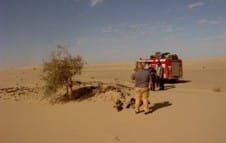
Road transport has grown quickly thanks to state’s support to access to credit cars, licenses (taxis) and passenger transport authorisations linking the Sahara region to all the Kingdom’s towns and major European cities. The liberalization of goods transport operated by the state in 2005 has allowed the emergence on the market of several domestic and foreign transport companies allowing goods transportation to and from the main cities in the Sahara region.
TELECOMMUNICATION
Telecommunications infrastructure in the Sahara region has witnessed an unprecedented development since 1975 covering the main communication axes and large and medium agglomerations. The great investments devoted by the national operators in the region constitute a priority action for the region development. This action aims at the extension, improvement and modernization of telecommunication networks by helping carry out major projects in the Western Sahara region.
Since 1975, The Western Sahara region has witnessed the completion of major projects including the installation and commissioning of digital telephone centers, providing many facilities and services with a total capacity of 43,350 equipment serving about 30,000 subscribers. The Sahara region is connected to the national network transmission by fiber optic links, digital microwave links, radio links and finally through satellite links. The Western Sahara region has a large space infrastructure to allow the maximum flow of traffic with other regions of the kingdom and for the routing of international traffic for departure and arrival for the same services: fixed voice & mobile, Data, Internet….
ICT SPACES
With the development of telecommunications infrastructure and sector deregulation, several spaces ICT (Information and Communication Technologies) were created in the Western Sahara region since 1994, the year when the GSM network was launched, and then in 1995, the year of the launching of the Internet in Morocco. In 1996, the draft of a national policy on the introduction of information technology and communications (ICT) in working areas and life was created with the aim of reducing the digital divide between the Kingdom and the rest of the world. It was strengthened in 1998 with the government designation of the e-government policy commonly called e-gov.
POWER
The development strategy in the power sector adopted by the Kingdom of Morocco in 5 provinces (Laayoune, Boujdour, Smara, Dakhla and Aousserd) consists of the implementation of regular and planned investments, in order to strongly support the development of these regions. In order to accompany the strong development of the electricity sector in the Sahara region, a regional branch in charge of electricity was founded in Laayoune. It manages the transmission and distribution networks as well as the commercial management of high, medium and low voltage customers across the Western Sahara region.
TARFAYA WIND FARM
Tarfaya region has a significant wind energy potential that can generate 600 MW. Under the 1000 MW wind power initiative, launched by the Kingdom of Morocco in order to diversify production and exploitation sources of national energy resources, it was decided to develop this region in a wind farm which can attain 200 MW. The site of this plant, covering an area of 6000 hectares, is located in the ADDWIKHIA region 2 km south of the city of Tarfaya on the Atlantic coast along the road linking Tarfaya and Laayoune.
TOURISM
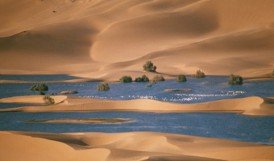
The Western Sahara region incorporates a multitude of potentially exploitable natural sites; it combines long stretches of the Atlantic, Oasis, desert landscapes, sand dunes and sabkhats (crater /high- salinity basin). The abundance of potential tourist sites requires integrated planning in the context of an overall strategy and synergy between the government and private operators to establish a policy for the development of these natural resources. Nowadays, the activity of travel agencies in the Sahara region remains confined to the attractiveness of a number, albeit growing, of tourists and businessmen mainly from the Canary Islands for visits of no more than two or three days or even a few hours. Some domestic and foreign investment has been undertaken in the region in order to raise the level of tourism potential in the region. Several coastlines equipped with hotels, clubs, cottages and villas.
To support these investments, steps have been taken to strengthen advertising campaigns, staff training and assistance in recruiting qualified staff in hotels in the region. As part of the development strategy, tour operators have been identified to promote tourism in the Sahara region. Among those sites, there is Laâyoune Beach, Lagoon Khnifiss, Oasis and Lamseid Sebkhat of Tah. In anticipation of the completion of those infrastructures, the region continues to receive some tourism events such as the economic and touristic week in Laayoune Sakia El Hamra, the Toulouse air Rally, Tarfaya, St. Louis, Raid Maroc Evasion. Once re-evaluated, these events might attract more visitors to the region. Despite the importance of the potential available in this region, tourism is not well- developed. The province has 12 unclassified hotels with 289 rooms and 459 beds.
Sites of tourist and religious interest have already been identified: Zaouias Rguibi Sidi Ahmed, Sheikh Maouelainin, Sidi Ahmed Laaroussi, Lhaj Hmer Lahya, Sidi Ahmed Oumoussa, rock carvings of Aassli and Miran, Oued Saguia El Hamra.
Its proximity to the Canary Islands which annually receives 14 million tourists and which constitute a metropolis and international tourism gives the Western Sahara an advantage.
CULTURE
The major ethnic group of Western Sahara are the Sahrawis, a nomadic or Bedouin ethnic group speaking the Hassānīya dialect of Arabic, also spoken in much of Mauritania. They are ethnically mixed descendants of Berbers, Arabs, and Black Africans, but claim descent from the Beni Hassan, an Arab tribe that have migrated across the desert in the 11th century. Physically indistinguishable from the Hassaniya speaking Moors of Mauritania, The Saharawis come from 22 different tribes so differ from their neighbours partly because of different tribal affiliations (as tribal confederations cut across present modern boundaries) and partly as a consequence of their exposure to Spanish colonial domination. Surrounding territories were generally under French colonial rule.
Like other Saharan Bedouin and Hassaniya groups, the Sahrawis are mostly Muslims of the Sunni branch and the Maliki fiqh. Local religious custom (Urf) is, like other Saharan groups, heavily influenced by pre-Islamic Berber and African practices, and differs substantially from urban practices. For example, Sahrawi Islam has traditionally functioned without mosques, in an adaptation to nomadic life.
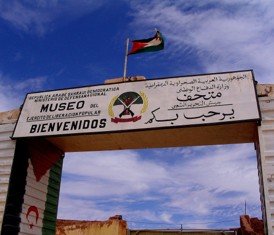
Museum of the Sahrawi People’s Liberation Army
The original clan-/tribe-based society underwent a massive social upheaval in 1975 when the war forced part of the population to settle in the refugee camps of Tindouf, Algeria, where they remain. Families were broken up by the dispute.
The Museum of the Sahrawi People’s Liberation Army is located in this refugee camp. This museum is dedicated to the struggle for the independence of Western Saharan people. It presents weapons, vehicles and uniforms, as well as abundant documentation history.
Perhaps the most important tradition in Saharawi culture is the process of making and drinking tea. Several times a day, Saharawi families, co- workers, and friends gather around a stove and tea pot to sip three rounds of sweetened green tea: the first bitter like life, the second smooth like death, and the third sweet like love. The whole process can take more than an hour, and Sahrawis pride themselves on their abilities to make a great tea. In years past, tea was important for Saharawi nomads for hydration, passing the time in solitude, and sharing stories and news with passers-by or family members. Tea rituals by the Sahrawis serve much the same purpose today, especially for those who live in the refugee camps.


